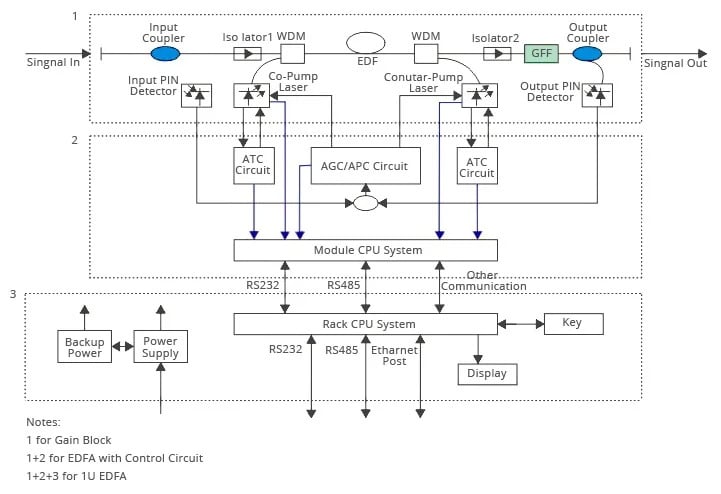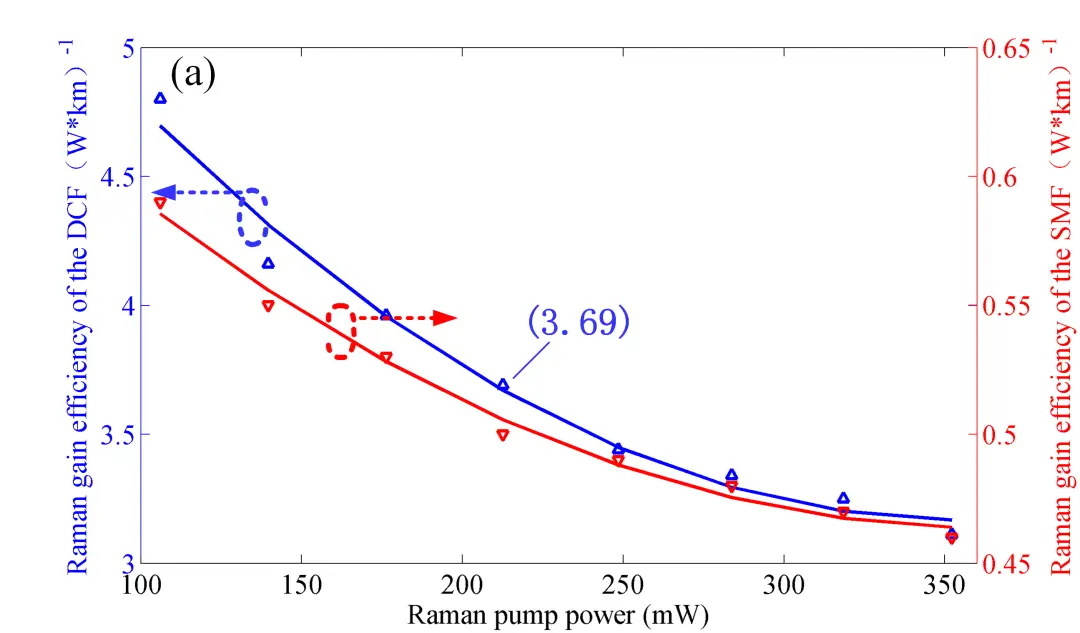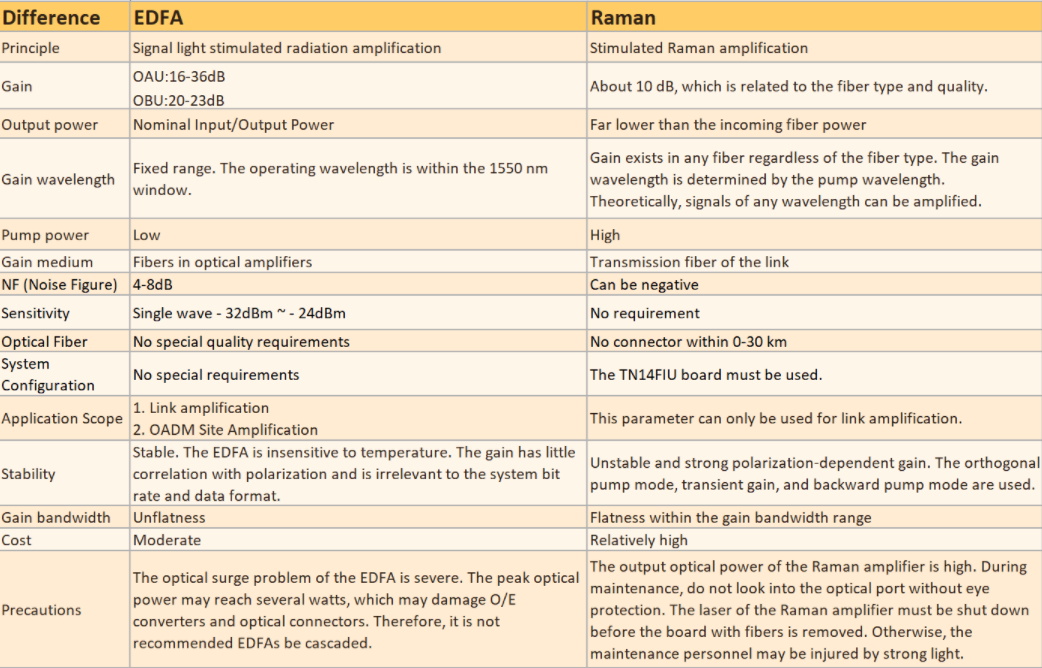In discussing the evolution of modern optical communication technology, we cannot overlook the tremendous impact of the Erbium-Doped Fiber Amplifier (EDFA). As the most widely used optical signal amplifier, EDFA not only technologically advances long-distance and high-capacity optical communication but also significantly simplifies the signal amplification process. Fiber-Mart will delve into the technical details, application advantages, and future directions of EDFA, and discuss the comparison and selection between EDFA amplifiers and Raman amplifiers.

Overview of EDFA Technology
As an essential component for long-distance data transmission, the optical signal amplifier directly amplifies optical signals without the need to convert them into electrical signals first. Among various types of amplifiers, the Erbium-Doped Fiber Amplifier (EDFA) is the most commonly used due to its efficient amplification performance and compatibility with Wavelength Division Multiplexing (WDM) technology. It is primarily used to compensate for fiber losses in long-distance optical communication, especially efficient within the 1530 to 1565 nanometer spectral range.

Working Principle and Composition of EDFA
The core components of an EDFA include erbium-doped fiber, a pump laser, and a WDM coupler. The optical signal (e.g., 1550 nm) enters the EDFA and combines with the pump laser (980 nm or 1480 nm), passing through the erbium-doped fiber. The erbium-doped fiber, as the gain medium, is excited by the pump laser to amplify the signal through interaction with the excited state erbium ions. This amplification process is not only efficient but also simplifies signal processing by directly amplifying the optical signals.

Application of EDFA in DWDM Systems
The integration of EDFA with Dense Wavelength Division Multiplexing (DWDM) technology plays an indispensable role in modern optical communication systems. In DWDM systems, EDFA can be used as different types of amplifiers:
- Booster Amplifiers: These amplifiers are used to amplify the outgoing side of the link to meet high output power requirements.
- Inline Amplifiers: Located at intermediate points in the link, inline amplifiers primarily compensate for transmission losses to maintain the strength of the optical signals throughout the transmission.
- Preamplifiers: Positioned at the receiving end to enhance receiver sensitivity and compensate for losses in the demultiplexer.
These three types of amplifiers together ensure the reliability and efficiency of high-density, long-distance signal transmission in DWDM systems.

Performance Parameters of EDFA: Gain and Noise Figure
The performance of an EDFA is mainly assessed by two key parameters: gain and noise figure. The gain describes the amplifier's capability to amplify the input optical signal, typically measured in decibels (dB). The noise figure, on the other hand, measures the additional noise introduced by the amplifier, affecting the overall quality of the signal. A low noise figure and high gain are critical standards for assessing EDFA performance, especially in long-distance optical communication systems requiring high signal-to-noise ratios.

Future Innovations in EDFA Technology
With the continuous growth in optical communication demands, higher requirements are being placed on technological innovations of EDFA. Future developments may include an expansion of the gain range, optimization of gain flatness, and simplification of overall system integration. Additionally, with the emergence of new applications such as space communication and deep-sea exploration, EDFA technology will need to adapt to more extreme environmental conditions to ensure efficiency and stability in various settings.
EDFA vs Raman Optical Amplifier
Choosing the appropriate optical signal amplifier is crucial when designing long-distance optical fiber cable networks. EDFA and Raman amplifiers are two mainstream technologies, each with its advantages and suitable application scenarios. Understanding the characteristics and differences between these technologies is vital for building efficient and cost-effective communication networks.
Features and Applications of EDFA
Since its commercial debut in 1987, the EDFA amplifier has been widely favored for its ability to instantaneously amplify multiple wavelengths within specific bands (such as the C-band and L-band). EDFA uses erbium-doped fiber as the amplifying medium and typically operates with 980 nm or 1480 nm pump lasers, where the 980 nm band is suitable for low-noise applications, and the 1480 nm band is better for high-power amplification. This amplifier is particularly important in DWDM systems because it can directly amplify signals transmitted through optical fiber cables without the need for optical-electrical-optical conversion, greatly enhancing communication efficiency and reducing costs.
Features and Applications of Raman Amplifiers
Raman amplifiers amplify signals through stimulated Raman scattering, a technique that allows for gain at any wavelength, thus accommodating a broader range of applications. Raman amplifiers can be divided into lumped and distributed types. Lumped Raman amplifiers usually use Dispersion Compensating Fiber (DCF) or high non-linear fiber as the gain medium, while distributed Raman amplifiers use standard optical fibers, enabling longer-distance signal amplification. Compared to EDFA, Raman amplifiers are particularly suited for scenarios requiring longer transmission distances and greater flexibility.

Criteria for Choosing Between EDFA and Raman Amplifiers
The choice between EDFA and Raman amplifiers should be based on specific network needs and cost-effectiveness considerations. EDFA's advantages include high gain stability, low cost, and high pump power efficiency, making it the preferred choice for most standard long-distance optical communication systems. Raman amplifiers, on the other hand, are better suited for ultra-long-distance transmission or applications requiring special wavelengths, especially where distributed amplification is needed.
Conclusion
A deeper understanding of EDFA's technical principles, performance advantages, and challenges enables us to better assess its key role in modern and future optical communication systems. Fiber-Mart EDFA is not just a fundamental technology in the field of optical communication but also a significant driver of technological progress. Additionally, EDFA and Raman amplifiers each have their unique advantages and ideal application scenarios. When designing optical fiber networks, it is necessary to consider factors such as transmission distance, signal wavelength, system cost, and expected network scalability, to choose the most suitable optical amplification technology. In some complex network designs, it may even be necessary to use both EDFA and Raman amplifiers to achieve the best signal amplification results and network performance.














No comments have been posted yet.